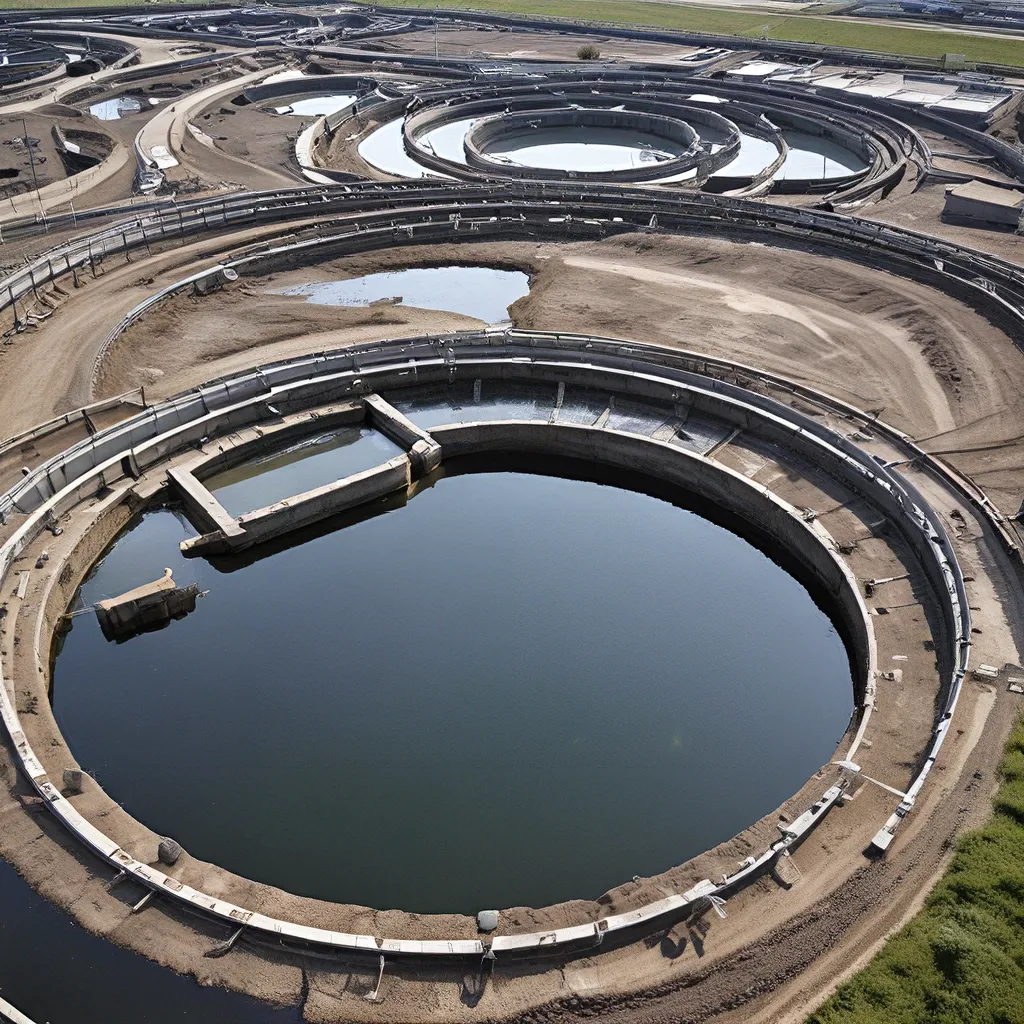
Unlocking the Hidden Treasure in Our Sewage
As someone who has always been fascinated by the ebb and flow of the natural world, I’ve long been intrigued by the concept of the circular water economy. The idea that we can transform the very waste we flush down our drains into a valuable resource seems almost too good to be true. But in the world of wastewater treatment, this is precisely what’s happening – and the implications are nothing short of revolutionary.
Let me take you on a journey through the fascinating world of sewage treatment, where innovation is breathing new life into an often-overlooked industry. We’ll explore how advances in technology and a shift in mindset are turning what was once considered waste into a treasure trove of renewable resources. From the production of renewable energy to the extraction of valuable nutrients and the creation of clean water, the possibilities are truly astounding.
The Evolution of Wastewater Treatment
Once upon a time, the primary goal of wastewater treatment was simply to remove contaminants and make the water safe to release back into the environment. But as our understanding of the circular economy has grown, the industry has undergone a remarkable transformation.
The European Environment Agency (EEA) has been at the forefront of this revolution, championing the idea of “beyond water quality” sewage treatment. Their research has shown that by adopting a more holistic approach, we can unlock a wide range of valuable resources from our wastewater, including energy, nutrients, and even clean water.
One of the most exciting developments in this field is the growing biogas industry. By harnessing the natural methane production that occurs during the wastewater treatment process, wastewater treatment plants are now able to generate their own renewable energy, reducing their reliance on fossil fuels and even contributing excess power back to the grid.
But the benefits of the circular water economy don’t stop there. Researchers have also discovered ways to extract nitrogen and phosphorus from sewage, which can then be repurposed as fertilizers for agricultural use. This not only reduces our dependence on synthetic fertilizers but also helps to close the loop on nutrient cycling, mitigating the environmental impact of traditional farming practices.
The Cutting Edge of Wastewater Treatment
As exciting as these developments are, the future of wastewater treatment holds even greater promise. Pioneering researchers are exploring new and innovative ways to extract even more value from our sewage, pushing the boundaries of what’s possible.
One particularly intriguing area of study is the extraction of rare earth metals from wastewater. These critical elements, used in a wide range of high-tech applications, are becoming increasingly scarce. By developing efficient methods for recovering these metals from our sewage, we could unlock a new urban mining industry, reducing our reliance on traditional mining and contributing to a more sustainable future.
Another fascinating avenue of exploration is the use of advanced biological treatment processes, such as anaerobic digestion and algae-based systems. These technologies harness the power of naturally occurring microorganisms to break down organic matter, not only purifying the water but also producing valuable byproducts like biofuels and bioplastics.
The Challenges and Opportunities of the Circular Water Economy
Of course, transitioning to a fully circular water economy is not without its challenges. Upgrading aging wastewater infrastructure, overcoming public perceptions, and navigating the complex web of regulations and policies are just a few of the hurdles that must be overcome.
But I firmly believe that the potential rewards far outweigh the obstacles. By embracing the circular water economy, we can not only reduce our environmental impact but also create new economic opportunities and build a more sustainable future for generations to come.
The experts at Alpha Wastewater have been at the forefront of this movement, pioneering innovative wastewater treatment solutions that unlock the hidden value in our sewage. And as the research and development in this field continues to evolve, I’m confident that we’ll see even more exciting breakthroughs in the years to come.
So, the next time you flush your toilet or rinse off your dishes, take a moment to appreciate the hidden potential in that seemingly mundane act. The future of wastewater treatment is here, and it’s ushering in a new era of sustainability, resource recovery, and environmental stewardship.
The Circular Water Economy: A Future Worth Flushing For
As I’ve explored the fascinating world of wastewater treatment, I’ve been struck by the sheer ingenuity and resourcefulness of the researchers and engineers pushing the boundaries of what’s possible. They’ve taken a challenge that many would consider a lost cause and turned it into a treasure trove of renewable resources.
Wastewater treatment is no longer just about purifying water; it’s about transforming waste into wealth, creating a sustainable cycle that benefits both the environment and the economy. And the best part? We’re just scratching the surface of what the circular water economy can achieve.
Imagine a world where our sewage doesn’t just disappear down the drain, but instead becomes a source of renewable energy, nutrient-rich fertilizers, and even rare earth metals. A world where we can close the loop on our water usage, reducing our environmental impact and creating a more resilient** system for generations to come.
This is the future that the pioneers of the circular water economy are working towards. And as they continue to push the boundaries of what’s possible, I can’t help but feel a sense of excitement and optimism for the days ahead.
So, the next time you think about the water that flows through your pipes, I encourage you to look beyond the surface. Because in that seemingly mundane liquid, there lies a treasure trove of untapped potential – a future worth flushing for.